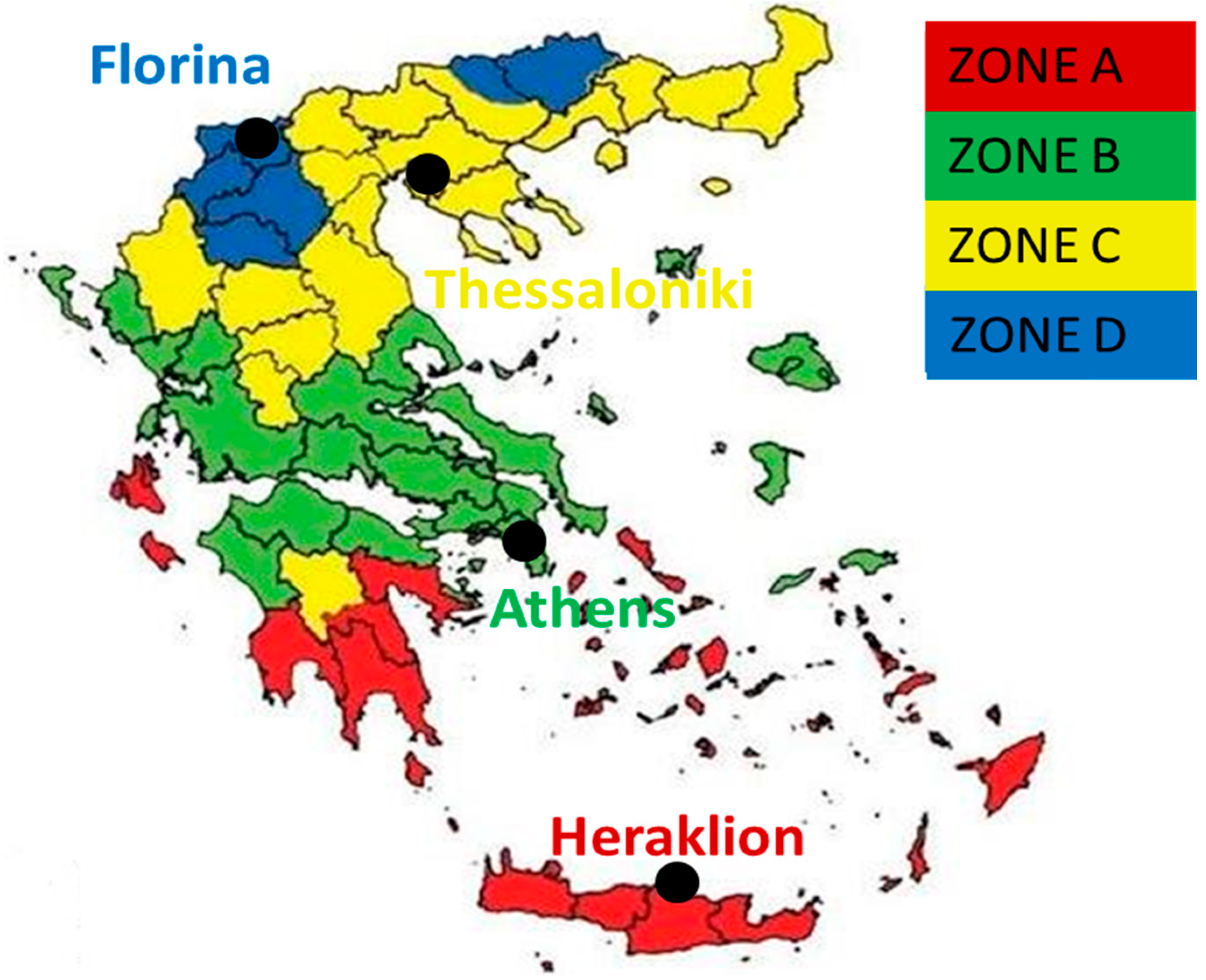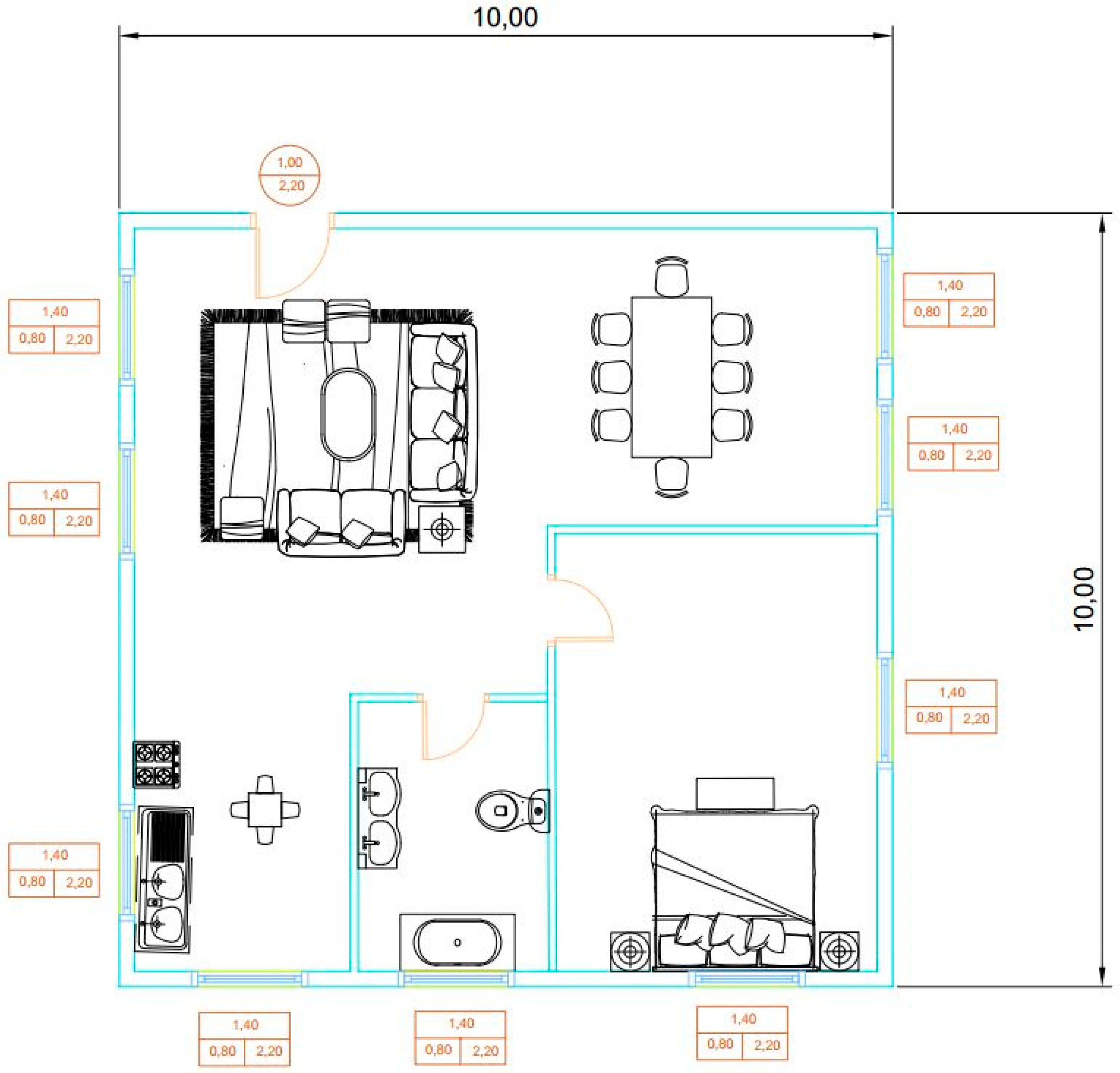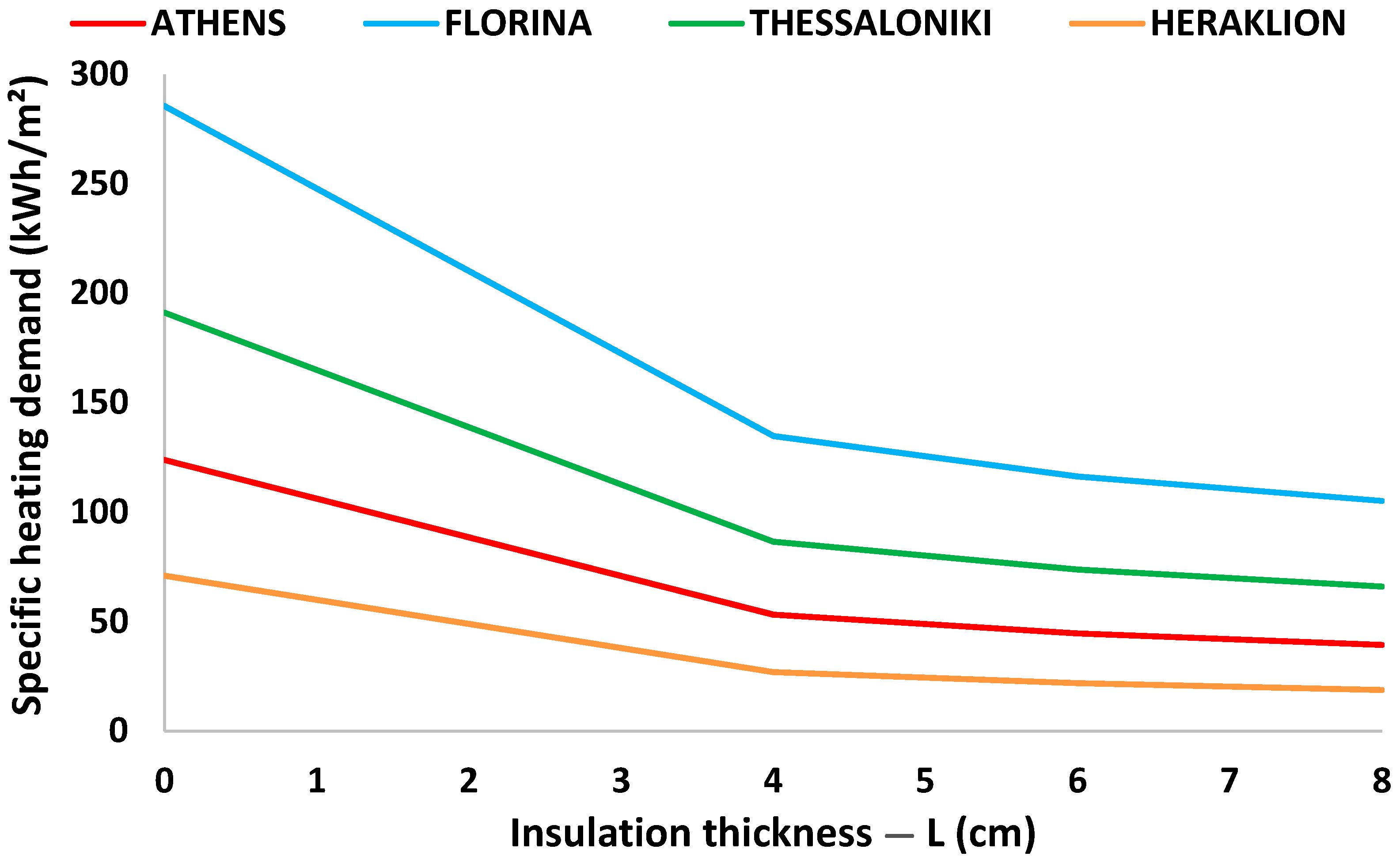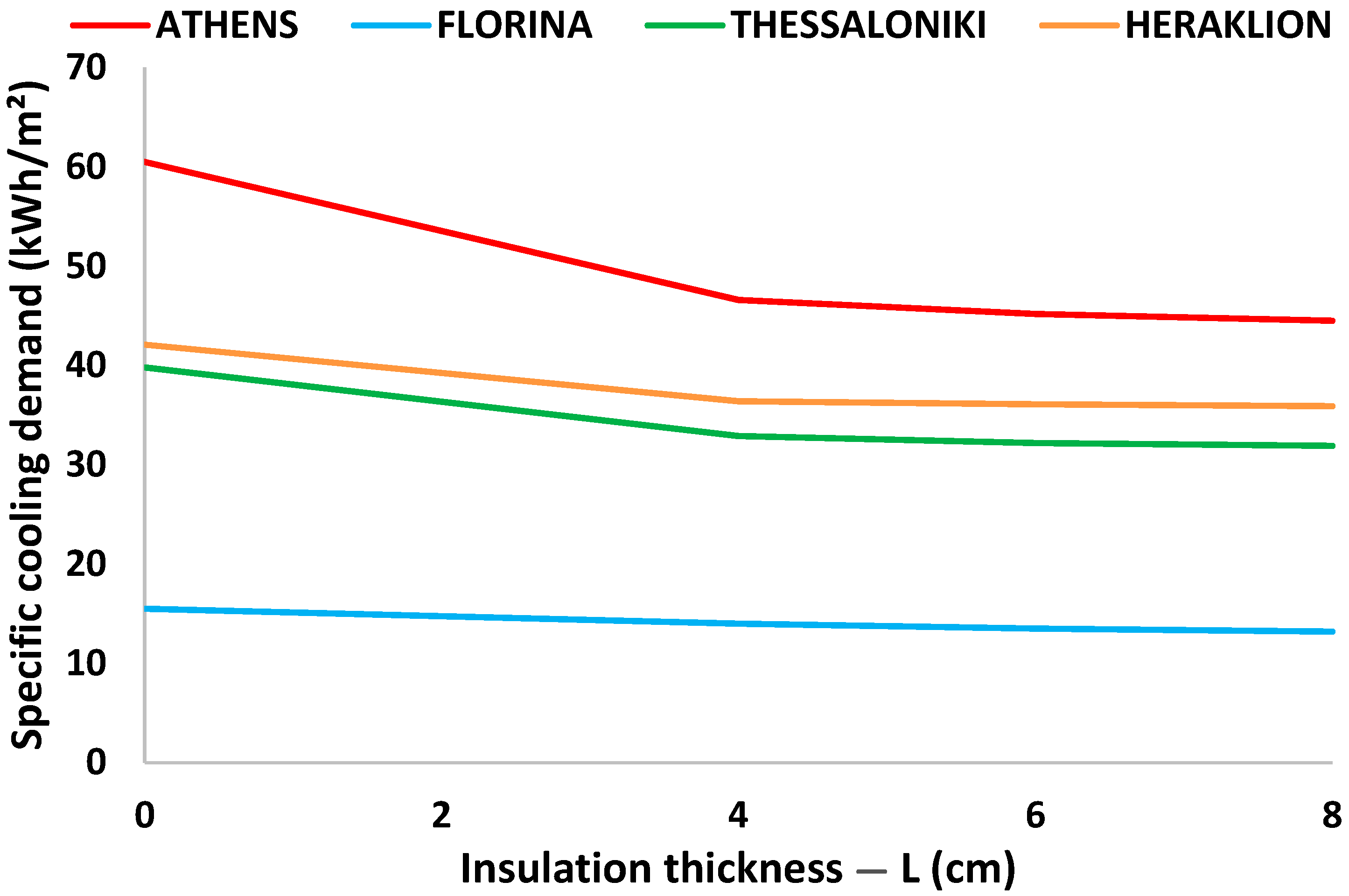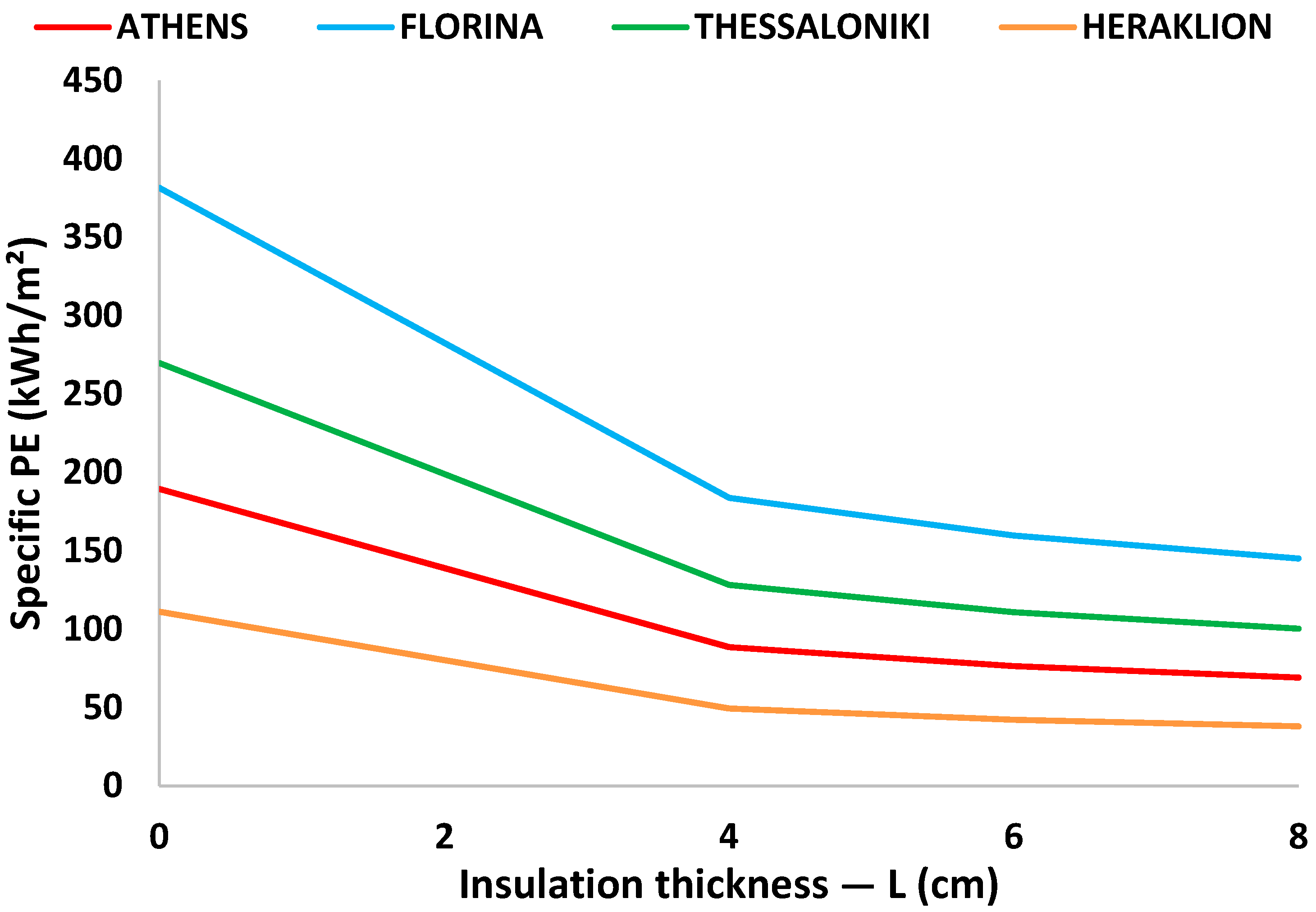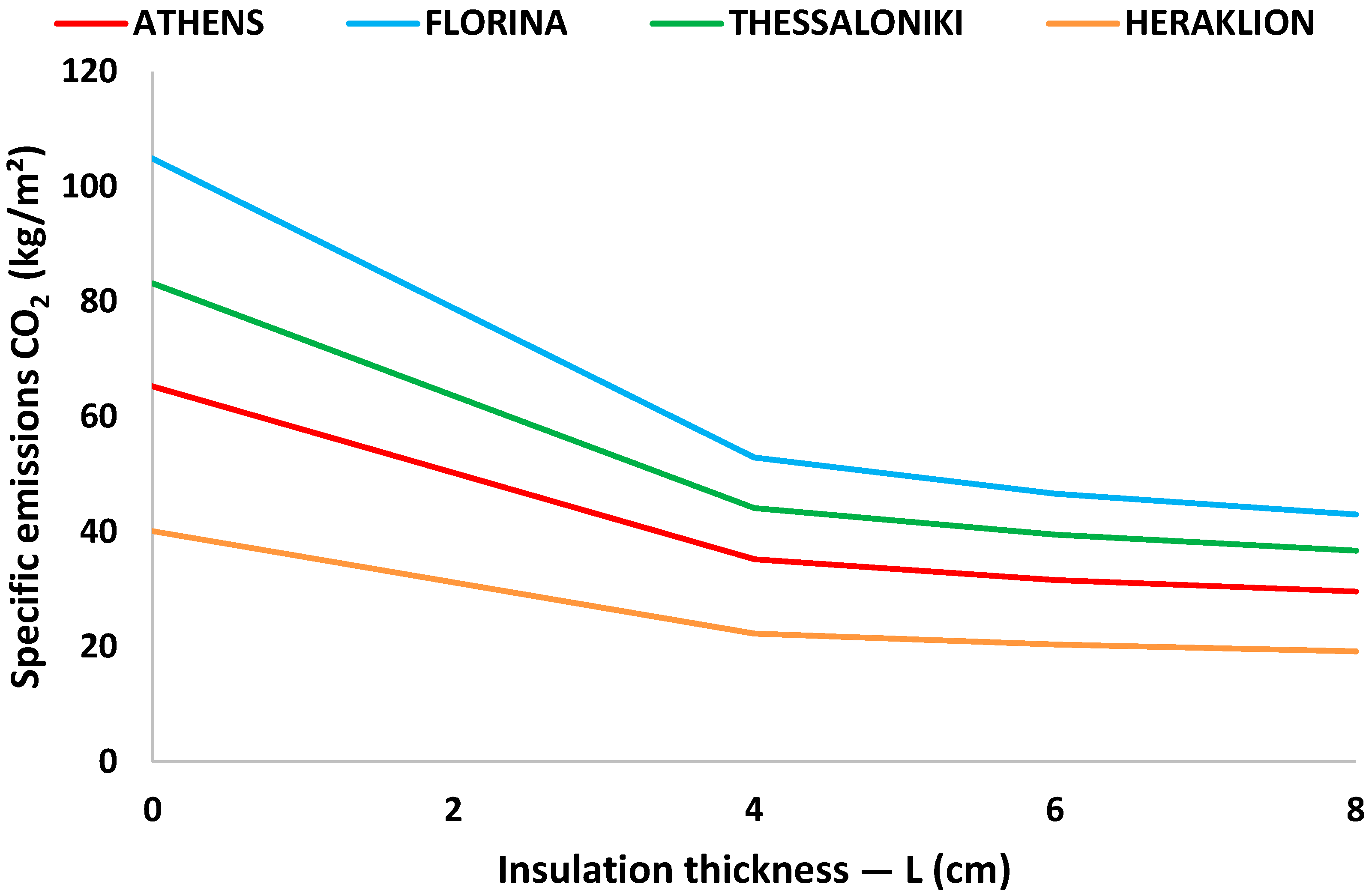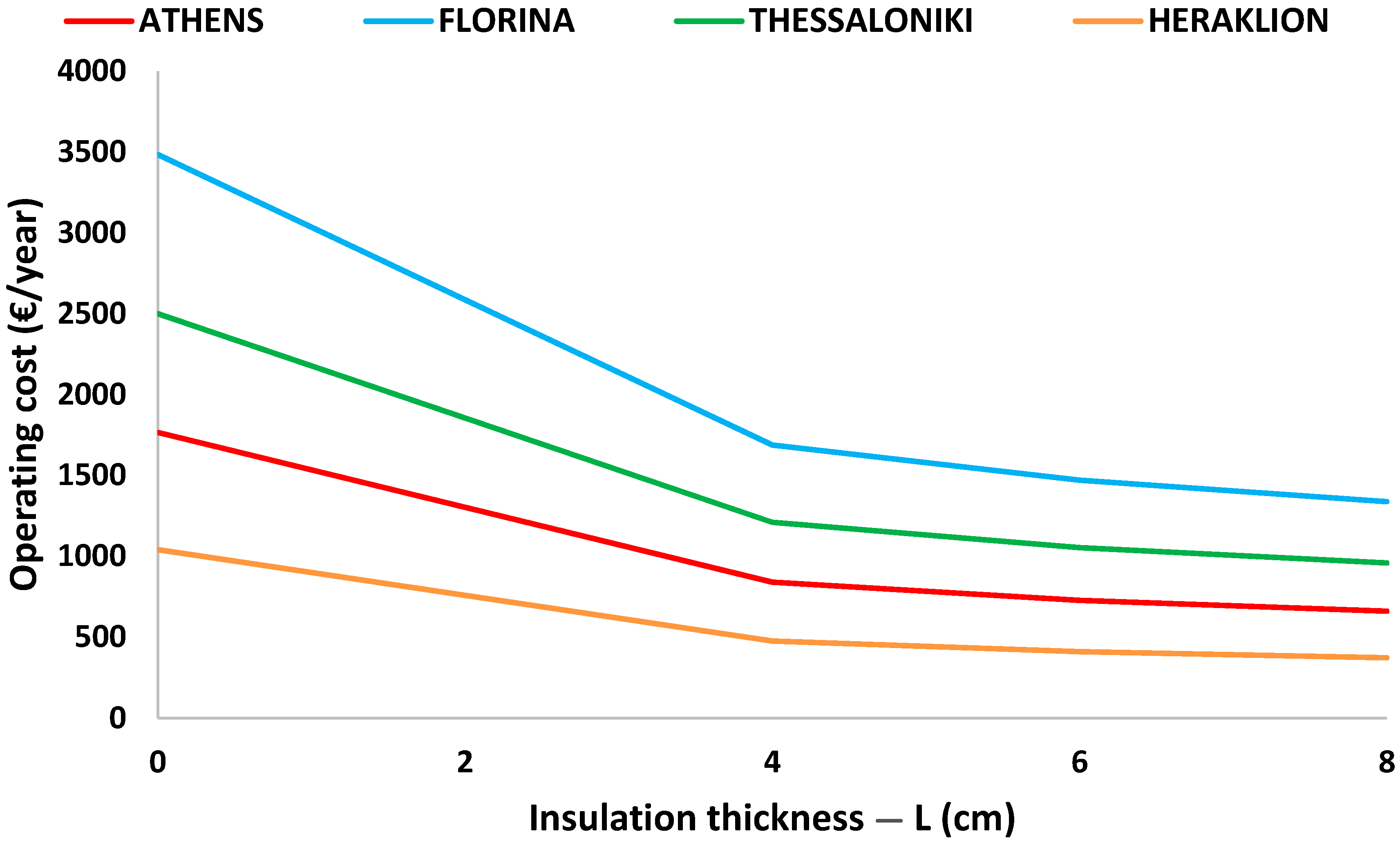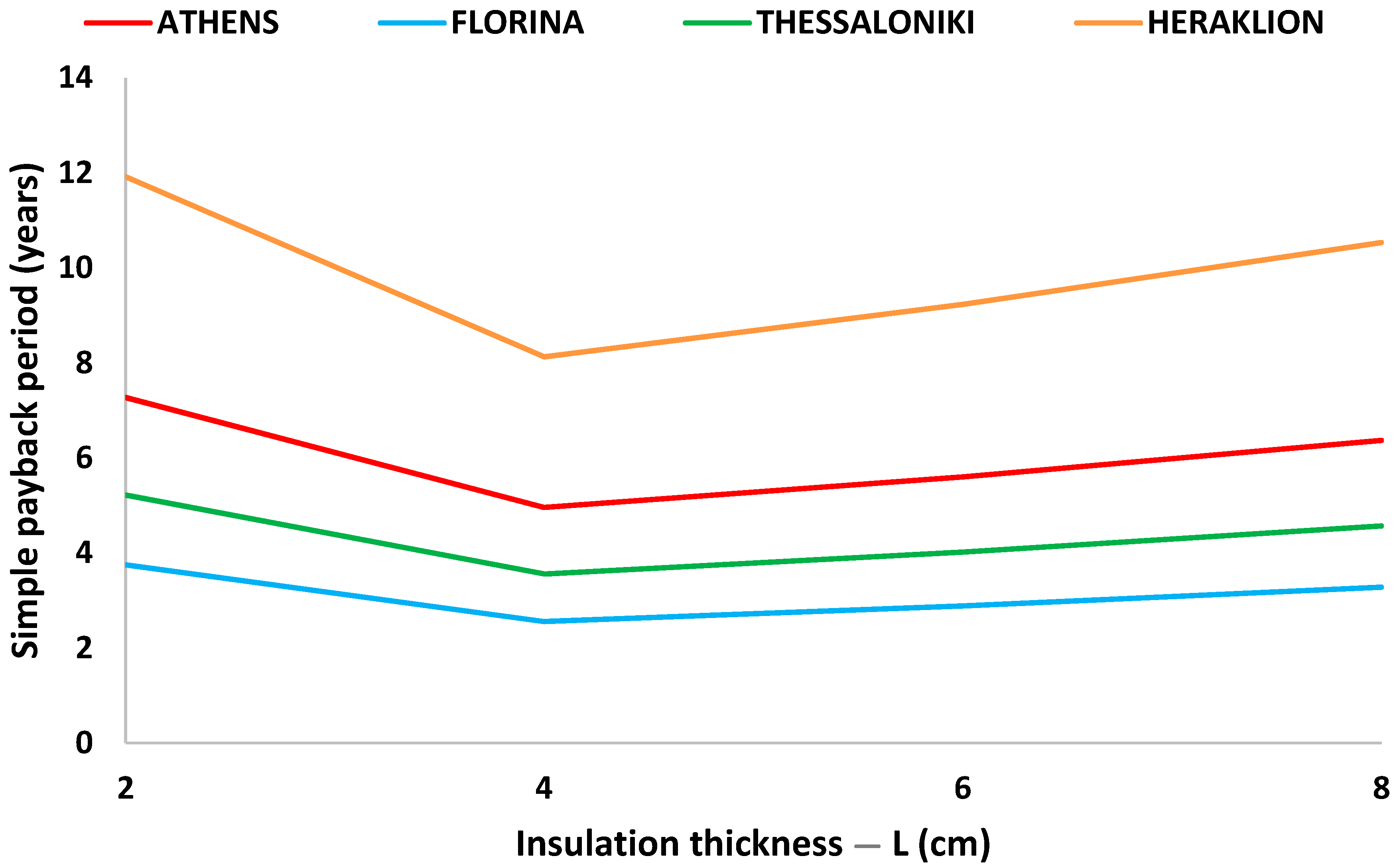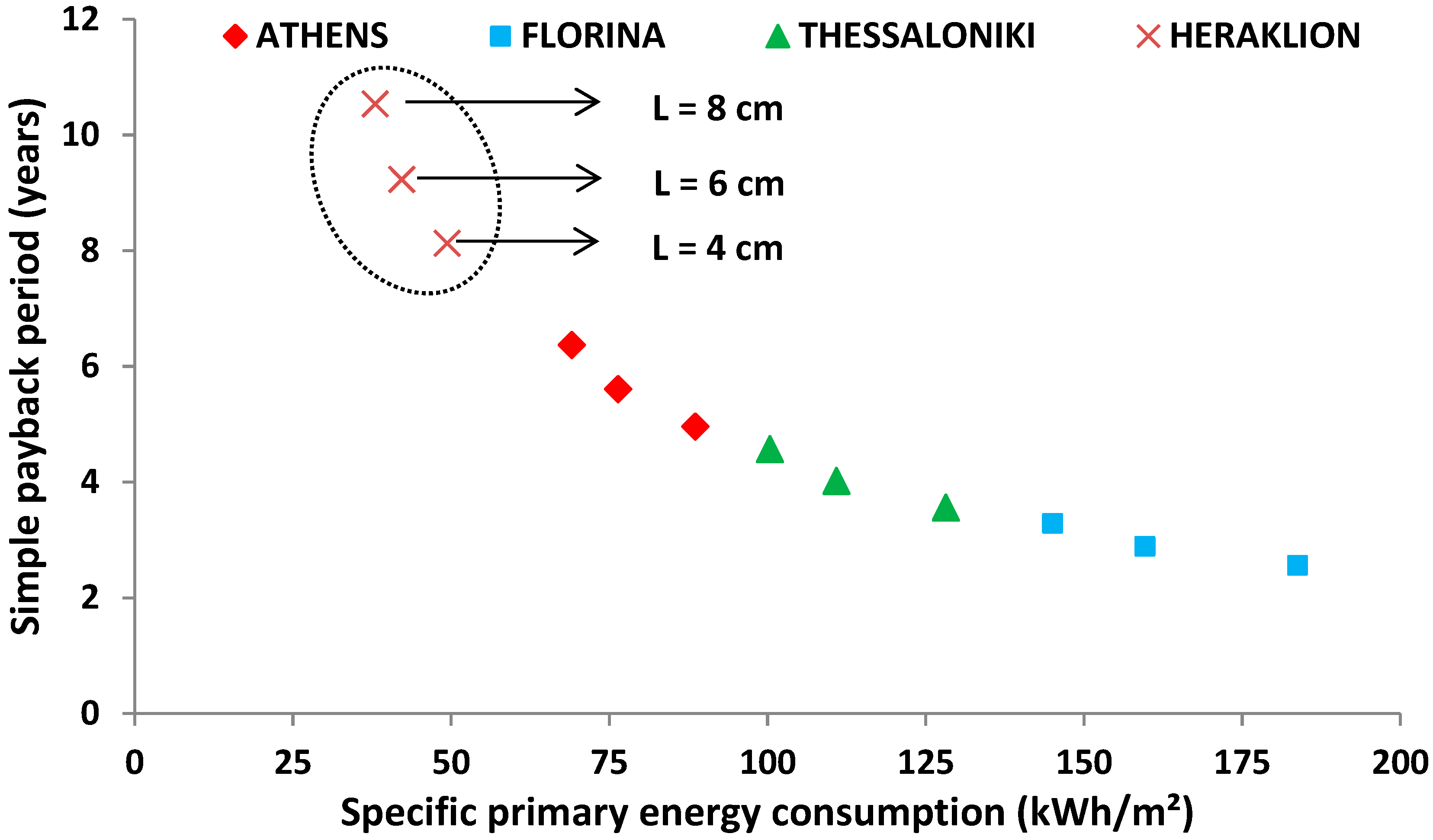1. Introduction
Building consumes large amounts of energy, which is approximately the 30–40% of the worldwide energy consumption [
1]. More specifically, this percentage is variable among the countries and it is 41% for the United States, 28% for China, and 37% for Europe [
2,
3]. The energy consumption for covering the heating and the cooling needs is about the 2/3 of the total energy needs in the buildings [
4]. Thus, it is obvious that there is a need for reducing these energy amounts in order to achieve lower energy consumption worldwide [
5]. Reducing the energy consumption in the building is beneficial for the total society because of the reduction in the CO
2 emissions and the reduction in the operational cost of the buildings [
6].
One of the most effective ways of reducing the energy consumption in buildings is the use of insulation in the building envelope [
7,
8]. The thickness of the insulation layer is a critical factor that determines the energetic and financial sustainability of every building. The insulation layer is extremely important for the reduction of both the heating and cooling loads, but especially for the heating loads, which can be varied from 15 up to 100 kWh/m
2 [
9,
10]. Moreover, the use of insulation is able to increase the thermal comfort inside the buildings and so the productivity of the workers can be increased [
11], and the sleeping or living conditions can also be enhanced [
12]. However, the use of insulated and especially well-insulated envelopes increases a lot of the construction cost of the building. However, this higher investment cost can be balanced by the reduction in the energy consumption, which reduces the operational cost of the building [
13]. In every case, it is important to take into consideration the life cycle of the building and investigate its energy consumption during its operation, as well as the energy consumption for the production of the utilized materials [
14,
15].
Greece is a country with significant heating and cooling loads, which creates high energy consumption in the buildings. Generally, the countries are separated into different climate zones in order to group regions with similar weather conditions [
16]. Greece is separated into four climate zones (A to D), with zone A being the warmest and zone D being the coldest. The deviations of the leads between the zones are important and so there are special regulations for the insulation design for every zone and for every envelope type [
17]. In the literature, there are studies that have investigated loads of the buildings for the Greek climate, as well as different technologies for covering these loads. Bellos et al. [
18] examined a typical building envelope in Athens (Greece) parametrically and found that the ventilation is the most important parameter for the determination of the loads in a building. Papakostas et al. [
19] examined different building envelopes with and without insulation for three climate zones of Greece (A, B, and C). They evaluated various scenarios financially and found that the use of excessive insulation is not favorable for zone C. Michopoulos et al. [
20] studied a typical building in Thessaloniki and found that the use of renewable energy sources is able to enhance the total building performance by 54%. Martinopoulos et al. [
21] examined different heating systems in Greek climate conditions and found that the use of natural gas is the most cost-effective choice, followed by heat pumps and biomass boilers, respectively. Tzivanidis et al. [
22] studied different solar heating system with and without heat pumps. They found that the use of 25 m
2 flat pale collectors coupled with a heat pump led to the minimum electricity consumption. Moreover, Tzivanidis et al. [
23] examined different solar heating systems for different insulation scenarios in buildings and found the optimum insulation thickness to be around 6 cm for Athens. In another important study, Dascalaki et al. [
24] stated that the addition of insulation in the old Greek buildings (built before 1980) can lead to the proper energy consumption reduction that is demanded in Greece. Lastly, Droutsa et al. [
25] performed a mapping of the Greek building energy performance and found numerous buildings in low categories. Moreover, they stated that the most usual retrofitting techniques are the use of improved windows and the use of solar collectors for domestic hot water production or space-heating.
Besides the Greek climate, there are other literature studies about the impact of insulation thickness and other parameters in the building thermal behavior. Marion et al. [
26] found that the windows to wall ratio is a useful parameter concerning building energy consumption in Italy. They stated that the optimum value of this parameter is close to 30%, but it is not the same for all locations. Jain and Pathak [
27] found that utilization of the proper insulation in the external wall can reduce the indoor temperature levels by about 4 K for the hot climate zones of India. Khoukhi [
28] found that the increased moisture is able to reduce the effectiveness of the insulation and leads to cooling loads increase in Oman. Torres-Rivas et al. [
29] found that the use of a 24 cm cotton insulation layer is able to reduce the cost of the system by 28% compared with the optimum scenario with polyurethane. Shekar and Krarti [
30] performed a study about the USA and they found 17% lower energy consumption using dynamic insulation materials. Moreover, the dynamic insulation has been examined by Koenders et al. [
31]. They found a reduction in the heating demand of up to 22% for the central European climate conditions. The previous studies indicate that in the literature for locations out of Greece, interesting ideas have been examined (e.g., dynamic insulation materials).
The previous brief literature review shows that there is a lot of research about the energy systems and the envelope insulation in the Greek climate conditions. Moreover, the climate deviations among the Greek climate zones make the situation complex, with a different optimum scenario to be found among the different zones. In this direction, this study comes to examine energetically and financially different insulation scenarios for all the Greek climate zones in a systematic way. The analysis is conducted for insulation thickness up to 8 cm, for a usual building envelope. The heating loads are covered with a usual system with a boiler, while there is a heat pump for covering the cooling loads. The analysis is conducted with the TEE-KENAK software, which is official software according to the Greek legislation by the Technical Chamber of Greece (Athens, Greece). It is important to state that this work does not examine the acoustic point of view of the different insulation scenarios. The results of this work regard the heating loads, cooling loads, primary energy consumption, CO2 emissions, operational cost, and simple payback period of all the examined cases. The insulation cost is taken into consideration, which is something important for these studies but is seldom taken into account. The final results of this work indicate the optimum financial scenario for every case, as well as the relationship between the energetic and financially optimum choices. These results can be used for the future design of a Greek residential building in all the climate zones. The novel part of this work is associated with the separate investigation of the energy and cost analysis, as well as the investigation of the insulation cost. Furthermore, the advantages/disadvantages of the great insulation thickness can be found by the multi-objective evaluation procedure.
